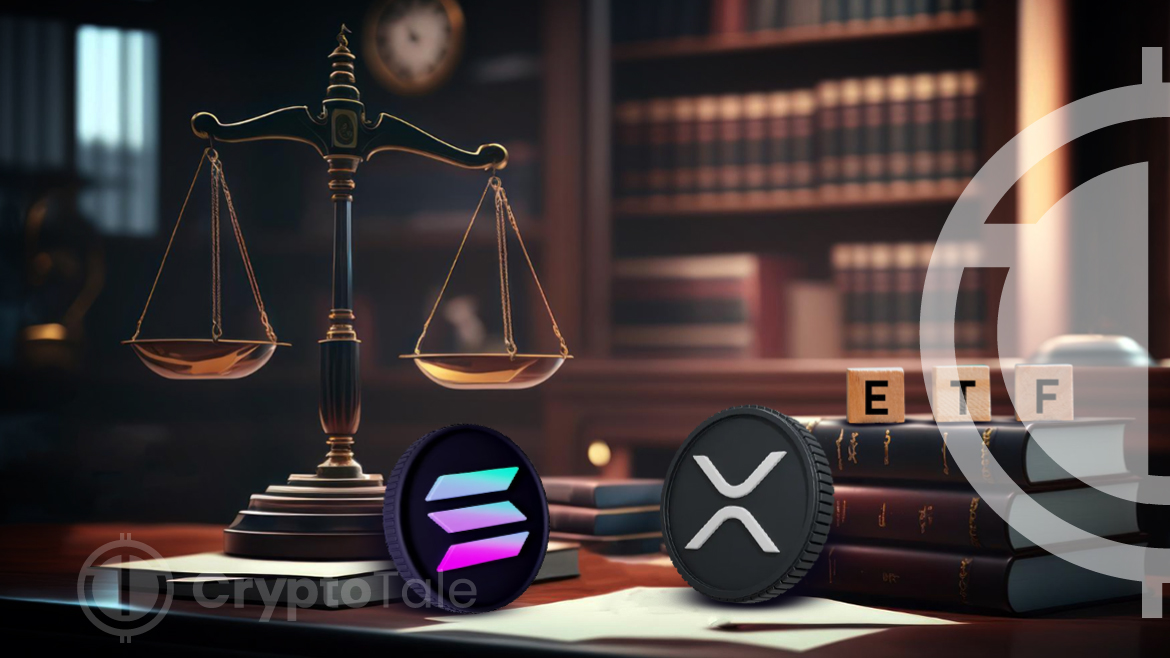- XRP and SOL face regulatory challenges hindering their US spot ETF approval, per legal expert Scott Johnsson.
- DCM Futures listing is crucial for altcoins like XRP and SOL to advance towards spot ETFs, says Johnsson’s analysis.
- Ethereum’s ETF prospects are influenced by the SEC’s “other means” test, a key factor in the evolving crypto market.
Legal expert Scott Johnsson in a recent detailed guide analysis shared via the X platform, higlights the challenges facing cryptocurrencies like Ripple’s XRP and Solana’s SOL in obtaining a spot ETF approval in the United States. Johnsson emphasized that these currencies are unlikely to see spot ETFs approved in the foreseeable future. This stems from their failure to complete the first and most crucial step of the regulatory process he outlined for Ethereum’s potential ETF approval.
Johnsson’s analysis suggests that without a DCM Futures listing, which indicates the asset is a non-security commodity, these cryptocurrencies cannot advance towards a spot ETF product. Expanding on the comparison with Ethereum, Johnsson’s four-step process highlights Ethereum’s progress and the hurdles it overcame, suggesting a potentially shorter approval timeline compared to Bitcoin.
However, for XRP and SOL, the absence of a DCM Futures listing is a significant roadblock. Johnsson’s stance indicates a broader regulatory challenge for altcoins seeking similar exchange-traded products. His analysis aligns with the evolving regulatory landscape and market dynamics, underscoring the complexity and specificity of the path towards spot ETF approvals for different cryptocurrencies.
Johnsson, compares Ethereum’s path to Bitcoin’s, underscoring the evolving regulatory landscape. The roadmap to a spot ETF is complex, beginning with a DCM Futures listing. This step is critical, as it classifies the asset as a non-security commodity. Ethereum, riding on Bitcoin’s trail, might see a compressed timeline, thanks to the legal groundwork laid by previous BTC spot ETF approvals.
Moreover, Johnsson delves into the SEC’s approach to ETF approval, focusing on three main paths. These include demonstrating inherent resistance to fraud and manipulation, implementing additional measures for market integrity, and establishing robust Surveillance Sharing Agreements (SSAs). The Grayscale ruling, which scrutinized the SEC’s “significant size” test, significantly influences Ethereum’s ETF prospects.
Hence, the SEC’s recent pivot to the “other means” test under Section 6(b)(5) marks a strategic shift. This methodology, reliant on correlation analysis, presents a fresh perspective on digital asset evaluation. Ethereum, therefore, must demonstrate a strong and consistent futures-spot market correlation to meet the SEC’s criteria.
Additionally, the looming May deadline adds a sense of urgency to Ethereum’s ETF approval process. Johnsson highlights the SEC’s strategic considerations, particularly around Ethereum’s non-classification as a security in recent actions. This factor, coupled with BlackRock’s influence in ETF applications, could play a crucial role in Ethereum’s bid for approval.
Consequently, as the deadline approaches, Johnsson maintains cautious optimism. He suggests that signals leading up to the decision will shed light on the SEC’s stance. Avoiding a confrontation with the D.C. Circuit could also sway the SEC towards approval.
Legal expert Scott Johnsson’s analysis reveals the obstacles facing XRP and SOL in securing US spot ETF approval, primarily due to their lack of a DCM Futures listing, designating them as non-security commodities. In contrast, Ethereum’s progress suggests a potentially quicker approval process highlighting the evolving regulatory landscape.












